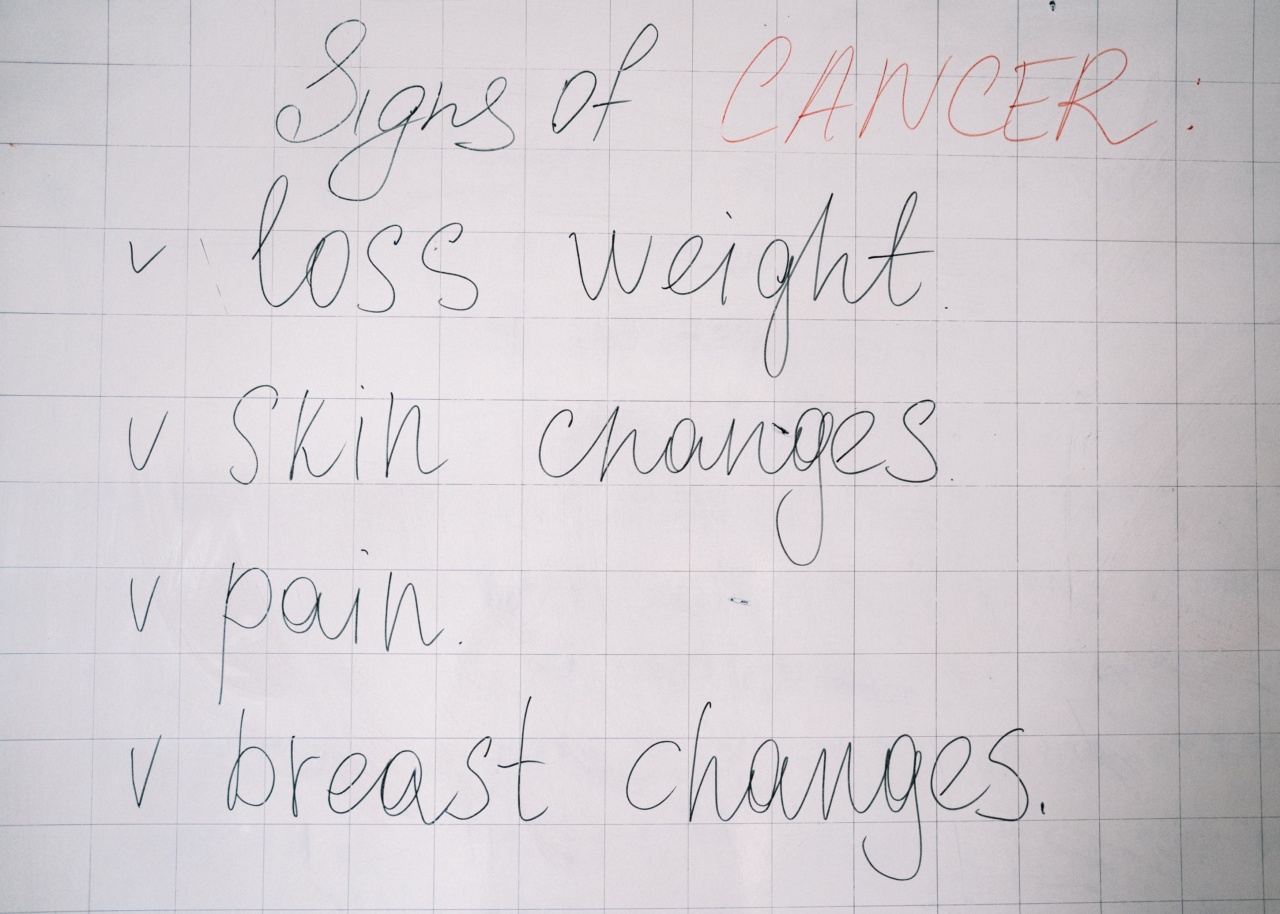When it comes to our health, it is always important to be aware of any unusual signs or symptoms that may indicate a potential problem. Two common conditions that can affect individuals are hemorrhoids and orthodontic cancer.
While both conditions are different in nature, it is still vital to recognize the symptoms associated with each to seek appropriate medical attention. In this article, we will discuss the symptoms of hemorrhoids and orthodontic cancer, helping you understand the differences and know when to seek professional help.
Symptoms of Hemorrhoids
Hemorrhoids, also known as piles, are swollen veins in the lower rectum and anus. This condition can be both internal or external, depending on the affected area. Common symptoms of hemorrhoids include:.
- Pain or discomfort: Hemorrhoids can cause pain and discomfort, especially during bowel movements or when sitting for long periods.
- Rectal bleeding: One of the primary symptoms of hemorrhoids is bleeding during bowel movements. You may notice blood on the toilet paper or in the toilet bowl.
- Itching or irritation: Hemorrhoids can cause itching or irritation around the anus, leading to discomfort.
- Swelling or lumps: External hemorrhoids may result in swelling, lumps, or a bulging sensation near the anus.
- Leakage of feces: In some cases, hemorrhoids may cause the leakage of small amounts of feces.
If you experience any of these symptoms, it is important to consult with a healthcare professional to confirm the diagnosis and receive appropriate treatment.
Symptoms of Orthodontic Cancer
Orthodontic cancer, also referred to as oral cancer, affects the mouth and throat. It develops when there are abnormal cell mutations in the mouth or throat lining.
Recognizing the symptoms of orthodontic cancer is crucial for early detection and treatment. Common signs and symptoms include:.
- Persistent mouth sores: Sores in the mouth that do not heal within a few weeks can be an indication of orthodontic cancer.
- Pain or discomfort: Constant pain or discomfort in the mouth, throat, or ear can be a symptom of oral cancer.
- Difficulty swallowing or chewing: If you experience difficulty swallowing or chewing, it is essential to seek medical attention, as it could be a symptom of orthodontic cancer.
- Changes in voice or speech: Orthodontic cancer can cause changes in your voice, such as hoarseness or slurred speech.
- Sudden weight loss: Unexplained weight loss without a change in diet or physical activity can be a concerning symptom.
- Persistent bad breath: Chronic bad breath that does not improve with oral hygiene measures may be a sign of orthodontic cancer.
- Swollen lymph nodes: Enlarged lymph nodes in the neck or throat could be an indication of oral cancer.
If you notice any of these symptoms or if you have concerns about your oral health, it is crucial to consult with your dentist or healthcare provider for a thorough evaluation.
When to Seek Medical Attention
While experiencing any of the mentioned symptoms does not immediately indicate the presence of hemorrhoids or orthodontic cancer, it is essential to seek medical attention when symptoms persist or worsen.
A healthcare professional will conduct a physical examination and possibly recommend further tests or refer you to a specialist for a proper diagnosis.
Early detection and timely treatment are key when it comes to both hemorrhoids and orthodontic cancer. Ignoring symptoms or delaying medical attention can lead to complications and potentially more severe health issues.
It is better to be safe than sorry when it comes to your health.
Conclusion
Being aware of the symptoms associated with various health conditions is important for early detection and prompt treatment.
Understanding the symptoms of hemorrhoids and orthodontic cancer can help individuals make informed decisions about their health and seek appropriate medical attention. If you experience any of the symptoms mentioned in this article, do not hesitate to consult with a healthcare professional to ensure a proper diagnosis and receive the necessary treatment.




























